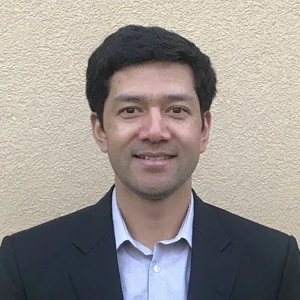 The COVID-19 pandemic has had a profound impact on global well-being, including poverty and education. | © shutterstock.com
The COVID-19 pandemic has had a profound impact on global well-being, including poverty and education. | © shutterstock.com
The COVID-19 pandemic has had a profound impact on global well-being, affecting multiple dimensions including mortality, poverty, and education. Understanding these impacts is crucial for informing policy decisions and improving the response to future pandemics. In our recent paper, we provide a comprehensive analysis of the pandemic's impact across these central dimensions using a common metric. This metric is years of human life, either the years of life lost due to premature mortality, or years of life spent in poverty (or will be spent in poverty) because of income decline or learning loss. Measures of aggregate loss that combine losses in these three dimensions of “lives, livelihoods, and learning” depend on how we value a year of life lost vis-à-vis a year spent in poverty that otherwise would not have been (if not for the pandemic). This valuation is obviously a normative decision and will vary across people and countries.
Mortality, poverty, and school closures have all contributed to the well-being losses experienced during the pandemic. We estimate these losses for 122 countries, covering approximately 95% of the global population, through the following measures:
- Years of Life Lost (YLL): defined as the difference between age at death for pandemic related “excess mortalities” in 2020-2021, and the conditional life expectancy for the excess deaths. It is calculated using WHO data on excess deaths and country-specific conditional life expectancies.
- Current Poverty Years (CPY): defined as the number of people pushed into poverty during the economic downturn of 2020-2021, using national poverty thresholds. (see Mahler et al. (2022) for details).
- Future Poverty Years (FPY): the long-term increase in poverty due to reduced economic growth from human capital losses due to school closures in 2020-2021, using the World Bank's Long Term Growth Model (LTGM) (see our paper appendix for details).
Losses around the world, by dimension
The world has seen significant losses in each dimension. Had these losses been distributed equally around the world, every person would have spent about two weeks in poverty in 2020–2021 (the CPY estimate), lost eight days of life (YLL, discounted to the present), and would expect to spend an additional month in poverty (FPY, again discounted to the present) after 2021 due to the pandemic. However, these losses were not distributed equally. Instead, lower- and middle-income countries bore a disproportionate burden. The results, summarized in Figure 1 below, indicate:
- The years of life lost (YLL) rise with national income until upper-middle levels, then fall, due to younger populations in poorer nations and better healthcare and vaccines in richer ones.
- Contemporaneous poverty years (CPY) is high in poorer countries, decreases with national income, and can be near zero for the richest nations, reflecting the effectiveness of their social policies during the pandemic.
- Future poverty years (FPY) decreases with income as lower-income countries experienced sustained school closures with younger populations, meaning a larger future workforce impact. Well-being loss from school closures dominates the loss from CPY at any level of national income—FPY is at least twice as large as CPY and sometimes three times as large.
Figure 1. Welfare costs of the COVID-19 pandemic in 2020 and 2021, by national per capita income

Note: The curves for Years of Life Lost (YLL), Future Poverty Years (FPY), and Current Poverty Years (CPY) (in years per 100 people) are smoothed based on fitted values from separate locally weighted polynomial regressions. In each regression, the natural logarithm of GNI PC (2020 US$, Atlas Method) is the independent variable, while YLL, FPY, or CPY is the dependent variable. A bandwidth of 0.75 is used in all regressions.
Total well-being loss
When aggregating the total well-being costs from the pandemic, we need to consider the value of a year of life lost relative to an additional year of life spent in poverty, which we call α. We don’t choose a specific value for α as reasonable views on this valuation differ. Instead, we present results for a range of plausible valuations of α=1, 4, and 10 as well as country-specific values that were calibrated from a specified utility function.
Regardless of the specific valuation chosen in our range, the analysis consistently shows that high-income countries experienced the smallest total well-being losses, while low- and middle-income countries collectively experienced much higher losses (Table 1). Regarding regional differences, countries in the Latin America and the Caribbean region experienced the greatest losses, as they suffered both large learning losses and significant mortality shocks (see paper for details).
Table 1: Average total well-being loss by income group in life-year equivalent terms (not weighed by population) |
||||
α = 1 |
α = 4 |
α = 10 |
country-specific α |
|
LICs |
18.7 |
5.3 |
2.7 |
13.6 |
LMICs |
18.3 |
5.8 |
3.2 |
9.2 |
UMICs |
17.2 |
7.2 |
5.2 |
8.1 |
HICs |
7.4 |
3.0 |
2.1 |
2.6 |
World |
14.7 |
5.1 |
3.2 |
7.7 |
Note: Total well-being loss is measured as YLL+(CPY+FPY)/α, where the normative parameter α captures the number of years lived in poverty deemed to yield the same well-being loss as one year of life lost.
Our loss estimates naturally come with caveats, including the exclusion of income losses for those above the poverty line and uncertainty surrounding the impact of learning loss on future poverty (as well as the effectiveness of any remedial learning). Nevertheless, our findings provide insights for policymakers and prompt speculation about whether different policy paths would have been chosen if this analysis had been available at the start of the pandemic.
This work was supported by the “Covid-19, lives, livelihoods and learning” RSB grant from the World Bank. Nishant Yonzan gratefully acknowledges financial support from the UK Government through the Data and Evidence for Tackling Extreme Poverty (DEEP) Research Program.






Join the Conversation